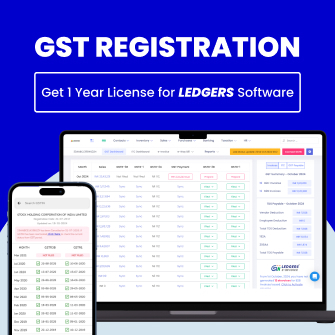
You can easily complete GST Registration firm registration online through Compliance Gurukul. For a sole GST Registration registration, only the PAN & Aadhaar card of the business owner is required. We can help you obtain the following registrations in less than 15 days:
Once, you have registered for the GST Registration firm registration online on Compliance Gurukul, please follow the steps below and upload the following documents by logging into Compliance Gurukul Software.
GST registration is the process by which a business obtains a unique identification number, known as a GSTIN (Goods and Services Tax Identification Number), making it liable to pay Goods and Services Tax (GST) in India. According to the Central Goods and Services Tax Act of 2017, businesses with an annual turnover exceeding ₹40 lakh (or ₹20 lakh in specific special category states) are required to register as taxable entities. The GSTIN, a 15-digit number, uniquely identifies each taxpayer under the GST framework and allows authorities to monitor transactions and related data effectively.
GST, or Goods and Services Tax, is a destination-based, multi-stage, indirect tax that replaces various other taxes, including VAT and excise duties. Under the GST Act of 2017, businesses that previously paid service tax, excise duty, or VAT must now register for GST. Additionally, GST registration is mandatory for eCommerce sellers regardless of turnover.
GST apply online through the official portal allows businesses and individuals to complete their GST registration without visiting government offices. This online process ensures a smooth and hassle-free experience, making it convenient for taxpayers to comply with GST regulations efficiently.. After submitting an application, the portal generates an ARN (Application Reference Number) status immediately, allowing applicants to track their registration progress.
Since its introduction on 1 July 2017, the Goods & Services Tax (GST) has been mandatory for all service providers, traders, manufacturers, and even freelancers in India. The GST system was implemented to replace Central and state-level taxes such as Service Tax, Excise Duty, CST, Entertainment Tax, Luxury Tax, and VAT, making the tax process more streamlined. The GST registration process charges vary depending on the type of business and turnover.
For those taxpayers whose annual turnover is less than 1.5 crore, the GST framework provides an option for a composition scheme. This scheme allows them to undergo simplified GST procedures and pay taxes at a predetermined rate according to their turnover.
The GST mechanism operates throughout various stages of the supply chain. This includes acquiring raw materials, production, wholesale, retail, and the eventual sale to the end consumer. Notably, GST is imposed at every one of these steps. For example, when a product is produced in West Bengal and then used in Uttar Pradesh, the GST revenue generated is allocated entirely to Uttar Pradesh, emphasizing the consumption-based nature of GST.
Registration under GST is an important step towards a unified tax system in India. It offers many advantages to registered businesses. A taxpayer who registers under the GST Act of 2017 will receive the following benefits:
A firm can obtain legal recognition as a supplier of goods or services by registering for GST. This validates the company's legal status as an official entity.
Businesses that are registered can deduct the GST they pay on purchases from the GST they collect on sales by claiming the Input Tax Credit. Consequently, the entire tax liability is decreased.
The GST system has reduced the complexity and time needed for compliance by streamlining the process for submitting taxes and making payments. With the help of a single online platform, businesses can more effectively manage their tax obligations.
Composition Scheme Under GST for Small Businesses allows them to pay tax at a lower, fixed rate. This reduces their tax burden and compliance requirements, making it easier to manage their finances.
With a higher registration threshold, only businesses with an annual turnover above ₹40 lakh are required to register for GST. This excludes many small businesses from mandatory registration, easing their operational processes.
GST eliminates the cascading effect of taxes by allowing input tax credit across the supply chain. This means that businesses can claim credit for the taxes paid on purchases, reducing the overall tax burden on end consumers.
The table below outlines the GST registration documents required for different types of entities. Ensuring that all necessary documents are submitted correctly can help speed up the registration process and avoid delays.